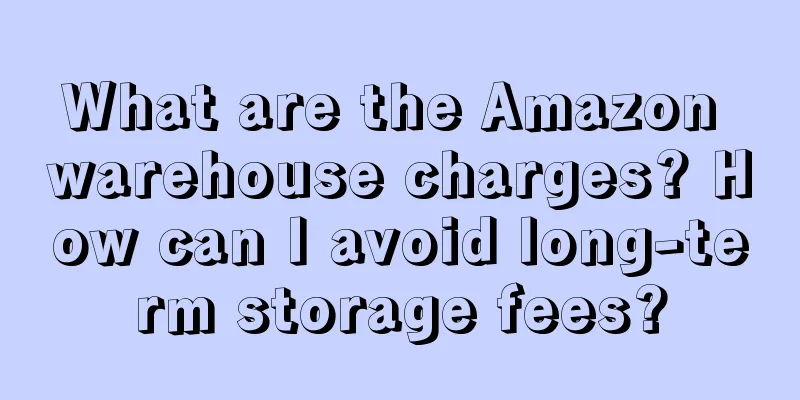What are the Amazon warehouse charges?
Amazon's monthly storage fees are charged based on the size of the product (standard size and oversized size) and different time periods (off-season and peak season). Although standard-sized items are smaller than large-sized items, they often require more complex and tedious racking, loading, and packing in Amazon warehouses. Amazon believes that the cost is higher, so when calculated based on volume, the total storage fee for standard-sized items may be higher than the warehouse fee for large items.
Amazon warehouse charges are calculated from cubic centimeters to cubic feet using the formula: length x width x height (in centimeters) to get the volume, or divide the volume by 28,316.84 cubic centimeters (30.48 cm x 30.48 cm x 30.48 cm = 28,316.84, which is equivalent to 1 cubic foot). For example, if you divide the value of 47 cm x 12 cm x 10 cm by 28,316.84, you get 0.199 cubic feet.
How can I avoid long-term storage fees?
1: Don’t stock up blindly. Control inventory in a planned and strategic way and calculate based on your sales speed. Seller friends can stock up a certain amount of inventory products after mid-February or mid-August each year. This is because if you stockpile products before these two dates, when Amazon clears out its inventory six months later, the unsold products may have been stored for exactly more than six months, and you will need to pay long-term storage fees.
2: We can also store products outside of Amazon warehouses and place them in a place that is convenient for filling Amazon warehouse vacancies and making it easy for us to ship products. At this time, sellers only need to place a small amount of inventory in the Amazon warehouse to minimize storage costs. At the same time, they can also quickly ship products to the Amazon warehouse to avoid out-of-stock situations and manage inventory flexibly and effectively. The only drawback is that we may need to pay additional fees for storing the products. You can consider this based on your needs.
3: If some of our products are about to reach the deadline for paying long-term storage fees, seller friends can promote these products. At the same time, we should also consider whether there is a problem with our listing that causes the product to be unsalable, and optimize the keywords and page details appropriately.
4: In case all other methods fail and the Amazon liquidation date is approaching, we can also create a removal order to clear the inventory. Have the Amazon warehouse return the product or destroy it directly. Of course, before making this decision, you need to do some calculations to see how to minimize cost losses. Generally speaking, destroying the product directly will result in less loss than sending it back.
This is the end of the information about Amazon warehouse charging standards. If you want to get more information about Amazon warehouse charging standards, please pay attention and we will continue to answer you~

